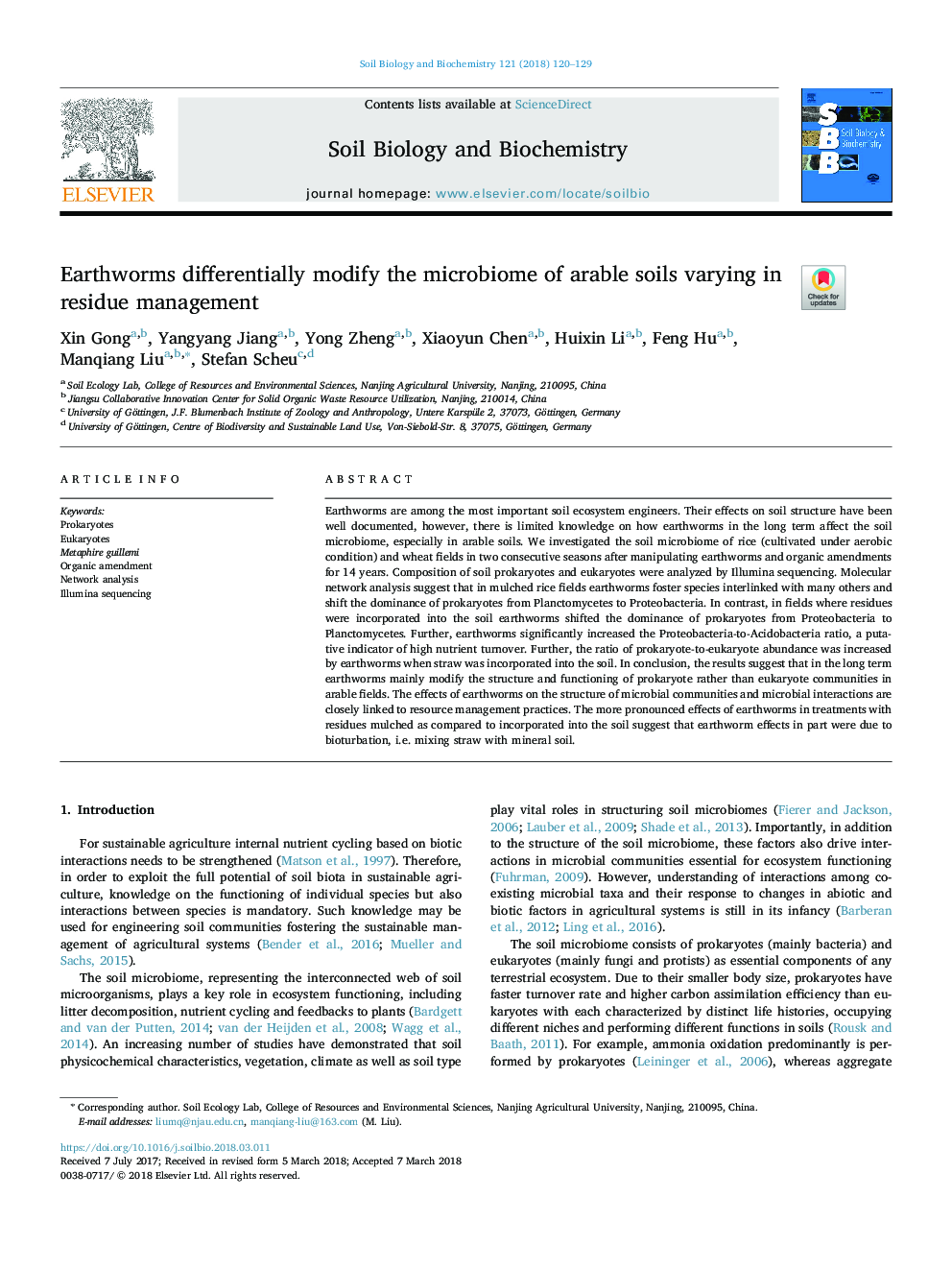| Article ID | Journal | Published Year | Pages | File Type |
|---|---|---|---|---|
| 8362783 | Soil Biology and Biochemistry | 2018 | 10 Pages |
Abstract
Earthworms are among the most important soil ecosystem engineers. Their effects on soil structure have been well documented, however, there is limited knowledge on how earthworms in the long term affect the soil microbiome, especially in arable soils. We investigated the soil microbiome of rice (cultivated under aerobic condition) and wheat fields in two consecutive seasons after manipulating earthworms and organic amendments for 14 years. Composition of soil prokaryotes and eukaryotes were analyzed by Illumina sequencing. Molecular network analysis suggest that in mulched rice fields earthworms foster species interlinked with many others and shift the dominance of prokaryotes from Planctomycetes to Proteobacteria. In contrast, in fields where residues were incorporated into the soil earthworms shifted the dominance of prokaryotes from Proteobacteria to Planctomycetes. Further, earthworms significantly increased the Proteobacteria-to-Acidobacteria ratio, a putative indicator of high nutrient turnover. Further, the ratio of prokaryote-to-eukaryote abundance was increased by earthworms when straw was incorporated into the soil. In conclusion, the results suggest that in the long term earthworms mainly modify the structure and functioning of prokaryote rather than eukaryote communities in arable fields. The effects of earthworms on the structure of microbial communities and microbial interactions are closely linked to resource management practices. The more pronounced effects of earthworms in treatments with residues mulched as compared to incorporated into the soil suggest that earthworm effects in part were due to bioturbation, i.e. mixing straw with mineral soil.
Related Topics
Life Sciences
Agricultural and Biological Sciences
Soil Science
Authors
Xin Gong, Yangyang Jiang, Yong Zheng, Xiaoyun Chen, Huixin Li, Feng Hu, Manqiang Liu, Stefan Scheu,
